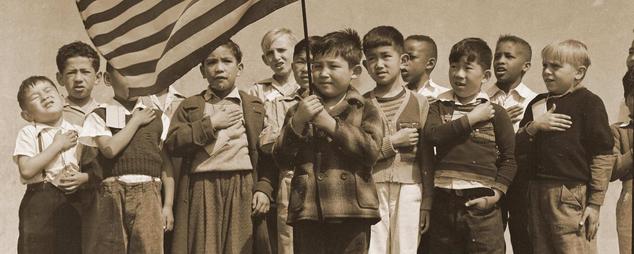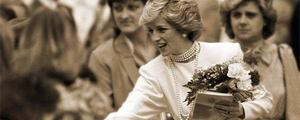Congress' addition of two little words to the Pledge of Allegiance in 1953 was significant enough at the time to warrant the attention of the Gallup poll. The change involved adding the words "under God" to the previously secular statement of fidelity to the nation's flag. And, according to a March 1953 Gallup poll, Americans largely backed it: 69% were in favor and 21% were opposed.
| U.S. adults | |||||||||||||||||||||||||||||||||||||||||||||||||||||||||||||||||||||||||||||||||||||||||||||||||||
|---|---|---|---|---|---|---|---|---|---|---|---|---|---|---|---|---|---|---|---|---|---|---|---|---|---|---|---|---|---|---|---|---|---|---|---|---|---|---|---|---|---|---|---|---|---|---|---|---|---|---|---|---|---|---|---|---|---|---|---|---|---|---|---|---|---|---|---|---|---|---|---|---|---|---|---|---|---|---|---|---|---|---|---|---|---|---|---|---|---|---|---|---|---|---|---|---|---|---|---|
| % | |||||||||||||||||||||||||||||||||||||||||||||||||||||||||||||||||||||||||||||||||||||||||||||||||||
| Favor | 69 | ||||||||||||||||||||||||||||||||||||||||||||||||||||||||||||||||||||||||||||||||||||||||||||||||||
| Oppose | 21 | ||||||||||||||||||||||||||||||||||||||||||||||||||||||||||||||||||||||||||||||||||||||||||||||||||
| No opinion | 10 | ||||||||||||||||||||||||||||||||||||||||||||||||||||||||||||||||||||||||||||||||||||||||||||||||||
| Gallup, March 28-April 2, 1953 | |||||||||||||||||||||||||||||||||||||||||||||||||||||||||||||||||||||||||||||||||||||||||||||||||||
The congressional resolution adding "under God" to the pledge was introduced by a Democratic congressman from Michigan who explained, "It is my hope that the recitation of the pledge, with this addition, 'under God,' by our schoolchildren will bring to them a deeper understanding of the real meaning of patriotism. Love of country is not just a blind adherence to an institution evolved out of the mind of man and established and maintained by human hands alone." President Dwight Eisenhower readily signed it into law.
The poll question was a bit unusual in that it required respondent participation. According to George Gallup, "Each adult questioned in today's survey was handed a card on which the revised wording of the oath of allegiance to the flag was printed. He was asked to read it along with the interviewer."
With 99% of respondents in the 1953 poll saying they believed in God, it is not surprising that Gallup found only minor differences by gender and educational background in support for adding "under God" to the pledge. However, older Americans were a bit more likely than younger adults to favor it.
It was only a decade earlier, in 1942, that Congress had codified the secular form of the pledge in U.S. law. That U.S. code both specifies the wording and instructs that it "should be rendered by standing at attention facing the flag with the right hand over the heart." Further, "When not in uniform men should remove any nonreligious headdress with their right hand and hold it at the left shoulder, the hand being over the heart. Persons in uniform should remain silent, face the flag and render the military salute. Members of the armed forces not in uniform and veterans may render the military salute in the manner provided for persons in uniform."

Gallup Analytics
Subscribe to our online platform and access nearly a century of primary data.
The original Gallup news release is available here.
Read more from the Gallup Vault.




